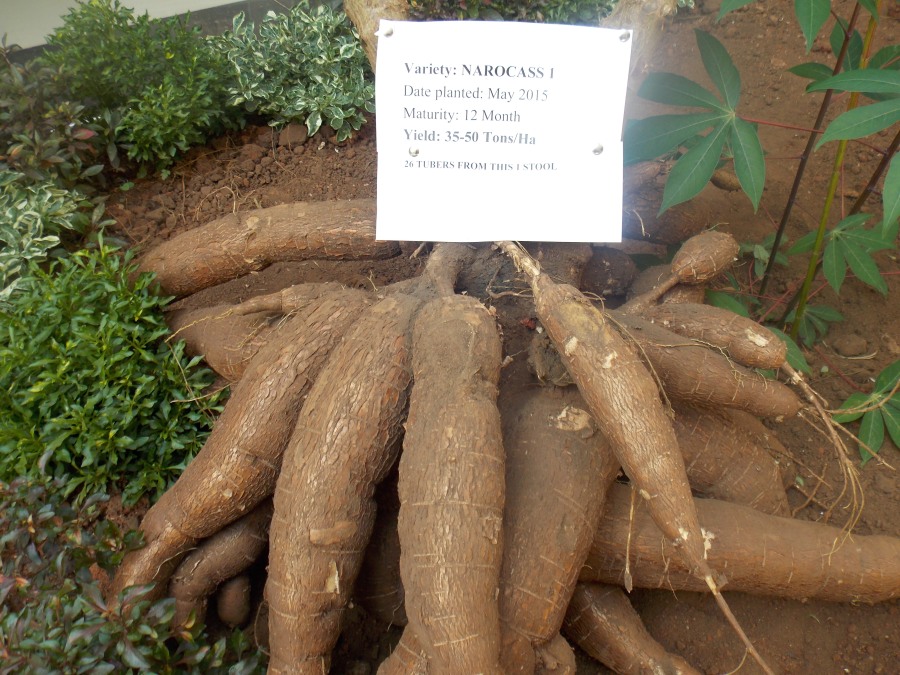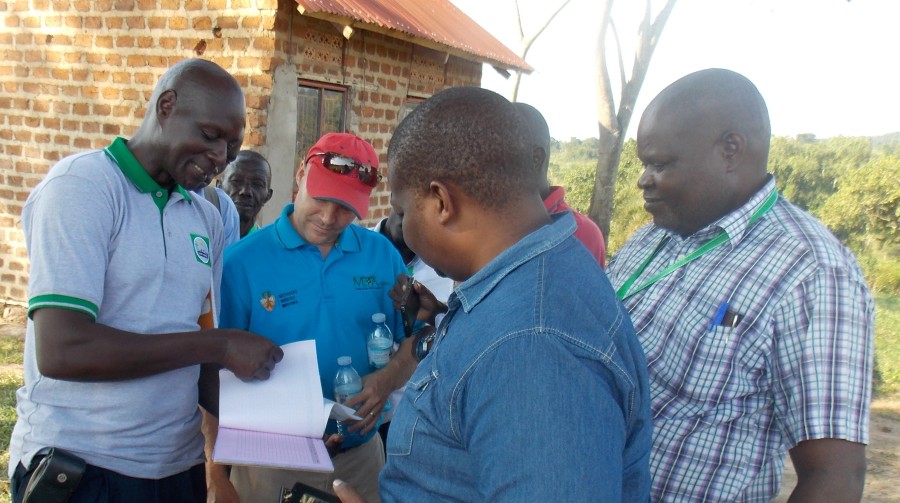Since arriving in Uganda, I’ve been learning a lot about the affects of Cassava brown streak disease (CBSD), which is devastating cassava production and threatening food security. The disease is spread by the whitefly insect, which picks up the virus from an infected plant and carries it to neighbouring healthy plants.
Cassava plants are grown by planting stem cuttings in the ground, which go on to become new plants. If farmers use cuttings from infected plants, the new plants will also become infected. This is a big problem, as infected cuttings can be transported to new areas, spreading CBSD across large distances.
What can be done?
Tolerance
Huge efforts are being put into a number of different solutions. These include breeding new cassava varieties, which are tolerant to CBSD. This is a very long and challenging process, as cassava plants also need to be resistant to Cassava mosaic disease (CMD) and have yield/taste properties which farmers and consumers prefer.
The National Crops Resources Research Institute (NaCRRI) has recently developed a new variety: NAROCASS1, which is tolerant to CBSD and resistant to CMD. This is now being used in areas where CBSD is particularly common and severe. Unfortunately, even tolerant cassava varieties can contain CBSD viruses and so it’s vital that farmers have access to clean cuttings.
 |
| Cassava variety NAROCASS1 with CBSD tolerance and CMD resistance. |
Clean seed system (CSS)
The cassava CSS project in Uganda is run by NaCRRI and involves picking the very youngest tip of the cassava plant to produce embryonic tissue, which develops into a new plant. These plants are then checked to see whether the CBSD virus is present before being taken to nurseries where they are carefully multiplied and eventually used for clean planting material for farmers. As you can imagine, this process takes a long time and is much more expensive than taking cuttings from a mature cassava plant. However it means that farmers can benefit from quality assurance that the cuttings they buy are virus free and stand the best chance of remaining healthy.
 |
| A clean cassava plantlet produced through tissue culture. |
The cassava CSS project has been running as a pilot for three years. It will be very interesting to hear how this project goes, as it’s likely to be a major solution to the CBSD problem.
Reviewing progress
Last week I had helped take minutes for the annual CSS review at NaCRRI, which involved lots of manic typing and concentration! As part of the review I got to visit a field where an entrepreneur is growing clean cassava plants. The plants certainly looked healthy, with no CBSD and CMD symptoms at all. With so much to think about, we still found time to have a cocktail party to let of some steam!
 |
| Clean cassava seed entrepreneur David Mpanga explains how he uses record keeping to track of outgoings and income. |
 |
| Katie Tomlinson |
More from this blog series:
Blog 3: Learning the ropes
Blog 4: Clean cassava to solve brown streak problem?
Blog 5: Taking a trip to the cassava field!
Blog 6: Using GM to fight cassava brown streak disease

